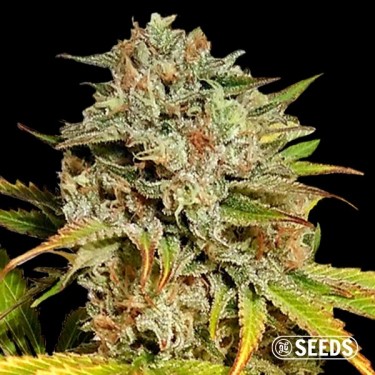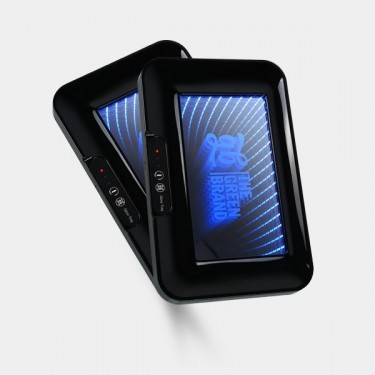
1000W HPS Evo Bulb
Regular price
- Reduced price
The best bulbs for indoor marijuana, are in this category. With them you can maximize your indoor growing. Discover high power varieties and specific spectrums for each phase of growth. Illuminate your harvest with quality products, selected to maximize the performance and health of your plants.






There are 43 products.









GB The Green Brand Products

GB Lighting LED Panel Pro 250 W

Auto Critical GB XXL

Grinder Aluminio GB 4 Partes 40mm

Auto Ak XXL

GB Endless Mirror Tray

GB Lighting 720W PRO MAX Dimmable LED System




















Discharge lamps work through ionized vapor or a gas inside the bulb. The large family of discharge lamps includes both HPS and MH lamps. Our website offers both types: metal halide lamps as well as HPS lamps for horticulture. You will also find some LEC lighting, which you can explore in more detail in the dedicated section of our website. Be sure to read each product description carefully to ensure accuracy and to make the right purchase based on your needs.
There are various types of discharge lamps, such as HPS or SHP for “high-pressure sodium” and MH for “metal halide”. Although similar in operation, they still have distinct characteristics: they contain different gases, which affects how they emit light. In general, it involves an electric current passing through high or low-pressure gas, producing photons and thus light.
Introduced to the market in the 1970s, the HPS lamp (also called SHP or high-pressure sodium lamp) uses sodium to produce light. There are also low-pressure sodium lamps, which emit a slightly different color. HPS bulbs are highly appreciated for their light efficiency.
This 600W HPS bulb from GB Lighting is very efficient. With a lifespan of over 20,000 hours and a full spectrum, it emits light in yellow, orange, and reddish tones, suitable for all stages.
A metal halide lamp is a type of lighting that uses several chemical elements, such as argon, mercury, halogens, and other components. They offer good light efficiency, which is why they entered the market in the 1970s.
Available in 400W and 600W, this metal halide discharge lamp from Sunmaster offers a bright white spectrum ideal for producing strong and compact plants.
MH or HPS? The difference between HPS and MH lamps mainly lies in the color they emit: an MH bulb emits a white/blue light, perfect for the growth stage, while an HPS bulb emits a yellow/orange color, ideal for blooming. This is because HPS lamps use sodium, while MH lamps use several chemicals.
You probably know that cannabis has specific needs that vary depending on its growth stage. For example, the plant's needs in the growth stage are different from those in the flowering stage, whether in terms of nutrient intake, temperature, humidity, or light. That’s why you need to choose your discharge bulb based on the different stages of your plants' life cycle.
During the growth stage, plants need blue light that simulates spring sunlight, which helps them develop and produce chlorophyll, allowing them to build a strong structure. Producing light in white/blue tones, MH bulbs are perfect for this.
This 600W MH bulb from Pure Light is available in 400W and 600W. It covers a large area and produces compact plants with short internodes, with a lifespan of 8,000 hours.
In contrast, during the flowering stage, plants need a redder light to replicate the natural conditions that trigger this phase, mimicking a more intense sun. It is recommended to use an HPS bulb, where the sodium inside will produce a red/orange light.
This SHP bulb from Agrolite is designed for flowering, offering a wide range of red tones, a lifespan of 15,000 hours, and a potential yield of up to 1g/W.
If you don’t want the hassle of changing bulbs, there are also mixed bulbs that can be used in all stages of the plant’s life cycle. This will save you from making multiple purchases and allow you to use the same lights throughout your grow.
This 600W HPS bulb for both growth and bloom offers a light spectrum in soft tones. With its E40 socket, it fits any setup and has a lifespan of about 20,000 hours.
First, you can choose between an MH bulb or an HPS lamp for growing based on the information provided earlier (growth or flowering?). As for wattage, it should be adjusted to the size of your grow and your yield goals. For example, a 400W HPS lamp or a 400W MH bulb will cover about 1 m².
Like any device, a discharge lamp has its advantages and disadvantages: knowing them will allow you to make a better purchasing decision and address any minor inconveniences. As for the positive aspects, these are lamps with a high light output, widely available, inexpensive, and easy to repair. On the negative side, they have lower efficiency than LEDs, generate heat, and therefore require additional equipment, such as a discharge lamp ballast, to regulate the electrical current.
HPS and MH lamps are the most commonly used in indoor cultivation because they are the most standardized, meaning they are easy to find, easy to repair and replace, and easy to adapt to various setups. Additionally, they are inexpensive to purchase and therefore require less financial investment than LEDs, for example, while providing a relatively high light output.
To determine the consumption of an HPS or MH lamp, there are various more or less precise formulas that will give you an approximation. To get an idea of the consumption of a 600W HPS lamp per day, you can calculate: lamp power (here, 600 W) x number of hours of use (in h) x 0.001, and if you want to know the daily cost, simply multiply by the price per kWh (in €).
It may be worth considering replacing your sodium lamp with an LED to reduce your electricity bills. Discharge lamps are cheaper to purchase, but LEDs are probably more cost-effective in the long term, allowing for savings. So, if your goal is to cultivate regularly with a limited budget, consider replacing your discharge lamp with an LED.